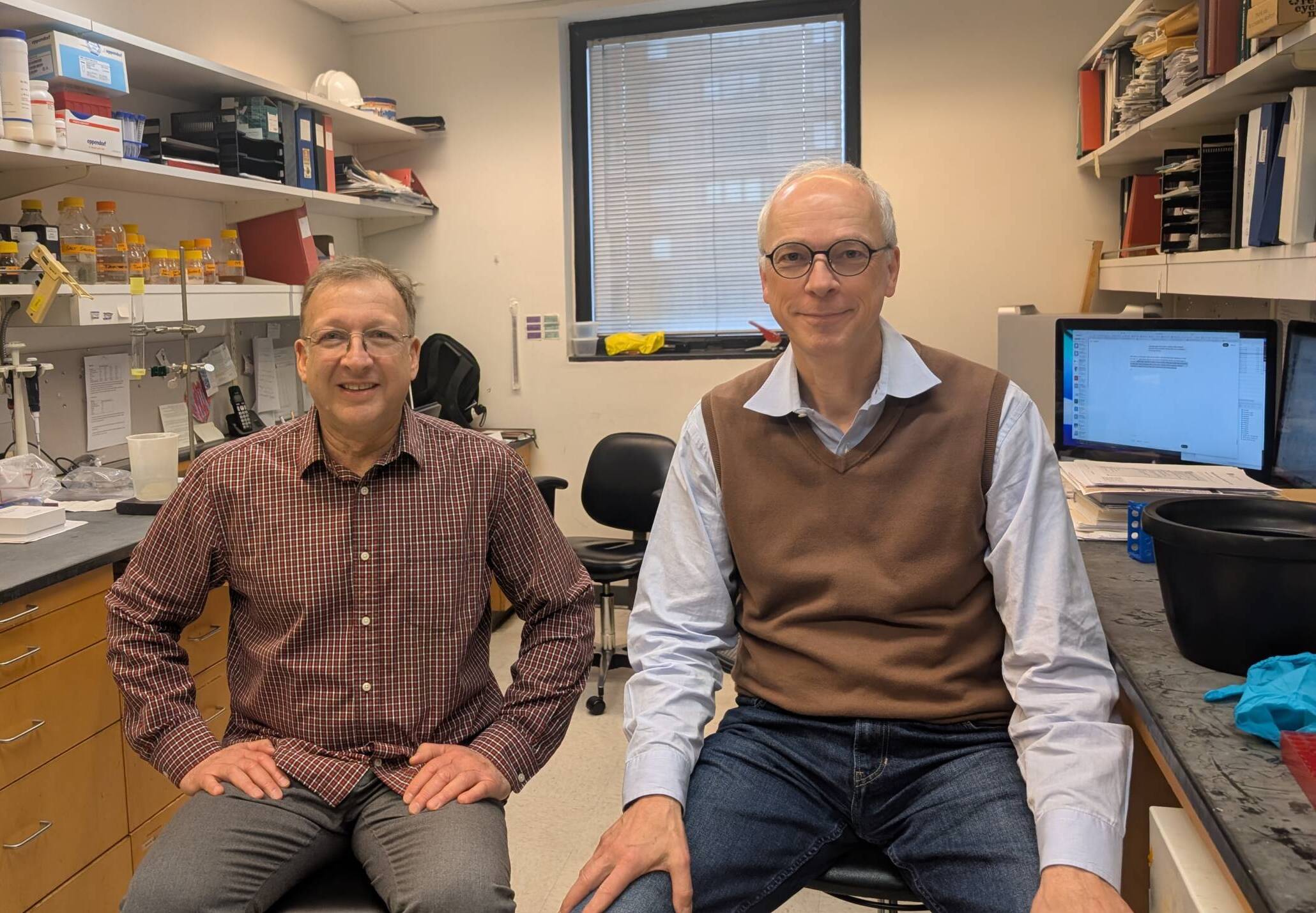Rockefeller's Tuschl Lab and DDRC discover New Antiviral compounds and targets
Amid the Global Effort Against COVID-19, Rockefeller’s Tuschl Lab Spearheads a Novel Antiviral Approach with Support from the Drug Discovery Resource Center

Fraser Glickman and Thomas Tuschl
In response to the evolving challenges of the COVID-19 pandemic, the Tuschl Lab at The Rockefeller University, known for its deep expertise in RNA biology, initiated a focused project targeting a lesser-known but essential component of the virus, the RNA capping enzyme necessary for the viral genome’s stability and effective replication. This enzyme, critical to the life cycle of the virus, offered a novel point of attack for antiviral drug development. The Fisher Drug Discovery Resource Center (DDRC), led by Dr. Fraser Glickman, was approached to utilize its expertise, high-throughput screening technologies and extensive compound libraries to accelerate the research.
Dr. Glickman details the collaborative role of the DDRC: “Our support for the Tuschl Lab involved not just the provision of resources but also the development and miniaturization of specialized assays that were crucial for screening potential inhibitors efficiently. We also managed the complex data resulting from these screenings and assisted in analyzing it to identify promising candidates.”
The project combined the Tuschl Lab’s RNA biological insights with the DDRC’s technological capabilities to methodically screen over 430,000 compounds. This extensive screening aimed to identify molecules capable of inhibiting the SARS-CoV-2 methyltransferase NSP14, an enzyme that has now been validated as a potential target for broad-spectrum antiviral drugs.
“The collaborative effort led to the identification of several promising compounds,” Dr. Glickman continues. “These compounds have shown potential against SARS-CoV-2 and may also be effective against other RNA viruses, broadening the impact of our findings. We then expanded our screening efforts to find compounds targeting many essential genes across many emerging viruses of pandemic concern. The vast amount of data generated will serve future efforts in developing new drugs for emerging viruses.”
To further support the optimization and detailed analysis of these compounds, the DDRC has incorporated cutting-edge scientific instruments into their workflow. The addition of the PerkinElmer Operetta high-content imaging system, the NanoTemper Prometheus Panta for protein stability measurements, and the Qiagen Digital PCR system has significantly enhanced the precision and efficiency of ongoing investigations.
Moreover, the recent expansion of the DDRC’s compound library to over 635,000 compounds has substantially widened the range of molecules available for screening, thereby expanding future interrogations of potential therapeutic targets.
Reflecting on the project, Dr. Glickman notes, “The Tuschl Lab took the lead on this pioneering research, and the DDRC was in a great position to offer the necessary support with our specialized technologies and resources. Our collaboration underscores the DDRC’s role in facilitating advanced scientific research and demonstrates how our center can help enhance the impact and reach of laboratory discoveries. It’s through such partnerships that we can adapt and advance our approaches to meet the challenges of emerging health threats.”
Dr. Tuschl adds “Working with Fraser and the team was a fantastic collaboration—combining expertise in compound screening, medicinal chemistry, cheminformatics and nucleic acid biochemistry to identify promising inhibitors and validate new anti-viral drug targets. This partnership truly showcased the power of teamwork, know-how and lab automation in drug discovery.”
For more insights into the methodologies and outcomes of this project, as well as other ongoing projects at the Drug Discovery and Research Center, please visit the DDRC webpage.
Detailed findings from this research are available in the study published in Nature: Meyer, C., Garzia, A., Miller, M. W., Huggins, D. J., Myers, R. W., Hoffmann, H.-H., … Tuschl, T. (2025). Small-molecule inhibition of SARS-CoV-2 NSP14 RNA cap methyltransferase. Nature, 637(1178). https://doi.org/10.1038/s41586-024-08320-0(opens in new window).
For additional reading on this subject, you can visit Rockefeller University News.
To read more news about the Scientific Resource Centers, visit https://www.rockefeller.edu/researchsupport/news-and-announcements.